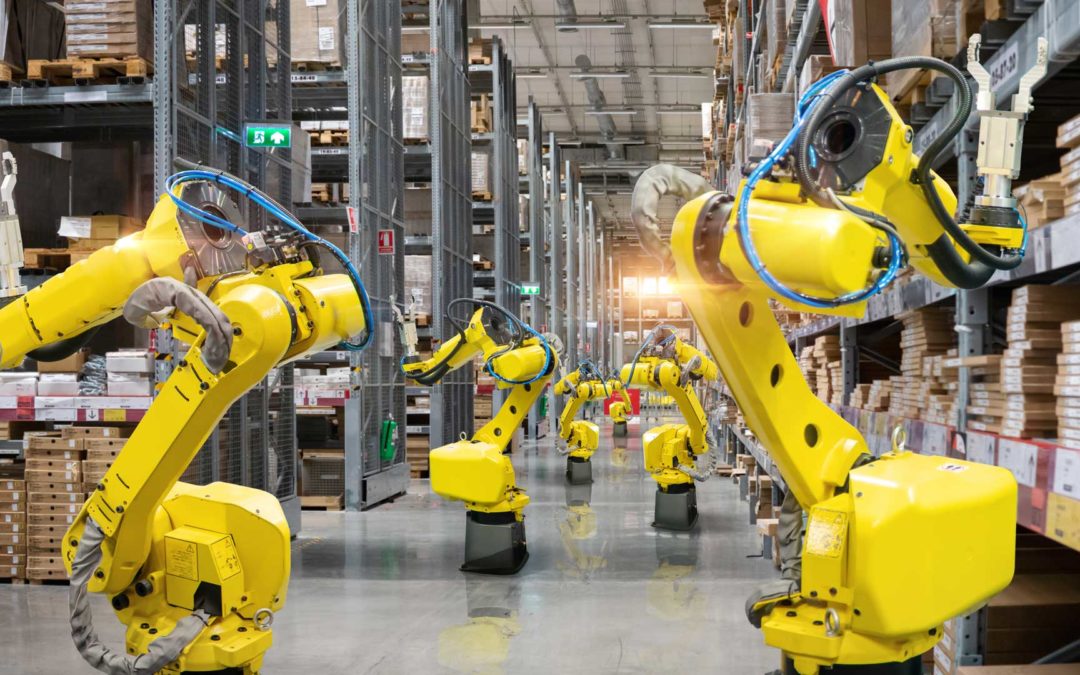Here’s why your company should be exploring and implementing more supply chain automation during the year ahead.
The case for business automation is strong, and the supply chain is one area where companies can reap significant cost savings, performance improvements, labor savings, and operational streamlining, among other benefits. By automating repetitive, time-consuming warehousing, logistics, transportation, and supply chain management tasks, companies are improving their workflows, getting more done, and eliminating manual processes that used to bog them down.
Why Automate the Supply Chain?
The systematizing of part or all of a workflow to improve processes, supply chain automation uses technology to centrally manage a complex web of working parts. By automating some or all of the supply chain, companies can effectively reduce manual effort while also increasing productivity, efficiency, and accuracy.
For example, Information Services Group (ISG) says using robotics to automate supply chain processes resulted in a 43% reduction in resources for order-to-cash processes including billing, credit, collections, and pricing. And, McKinsey predicts that automation could accelerate the productivity of the global economy by between 0.8% and 1.4% of global GDP annually. “In other words,” QuickBooks Commerce points out, “supply chain automation is both cost-effective and leads to higher profitability.”
Here are six reasons all companies should consider implementing more automation in 2021:
- Your customers are asking for it. E-commerce sales skyrocketed in 2020, taking an already-growing sales channel to new heights within a very short period of time. This put new strains on supply chains, systems, and labor—all at a time when health concerns, social distancing, and other issues were taking a toll on the supply chain. Companies that already had automation in place—or that invested in it quickly after the pandemic emerged—were best positioned to meet their customers’ needs.
- The technology itself has come a long way. As automation becomes more affordable for small to midsized companies, its application is being seen across the end-to-end supply chain. In 2020, for example, many companies invested in automation to help manage the huge uptick in e-commerce orders, which increased quarter upon quarter during the pandemic. These numbers aren’t expected to retreat anytime soon, which means the companies that invested in automation are now well positioned for success in the post-COVID world.
- Meet the need for speed. Today’s B2B and B2C customers want their orders delivered faster than ever, with next-day and same-day becoming the norm in some industries. If your company can’t meet those requirements, the next competitor is literally one screen tap or mouse click away. Using automation tools, companies can streamline their fulfillment and supply chain operations, reduce their dependency on labor, and more efficiently meet their customers’ delivery demands.
- Leverage multitasking robots. Automated warehouses have begun implementing small pick and pack robots that can quickly traverse a warehouse and find the correct object via SKU, UPC, or even RFID in some cases. “These warehousing robots are ready to go at a moment’s notice,” SelectHub points out, “and do not have to drop other tasks in order to grab the product they need to move.”
- Keep customers updated on order and shipping status. Automation also helps keep customers in the loop about their orders without needing additional customer service reps manning the phones and email. When an order is received, it automatically triggers the fulfillment process, while providing customers with constant information on where their package is, when it should arrive, and any other information they may need. “When you are feverishly refreshing your shipping status on Amazon to see when that fancy new TV is expected to arrive,” SelectHub adds, “you can thank automation for keeping you up to date.”
- Future-proof the supply chain. According to Gartner, 30% of operational warehouse workers will be supplemented, not replaced, by collaborative robots in 2023. “This shows how essential the implementation of technology is and will be in the future, especially now that COVID-19 has proven to be a catalyst in technology adoption,” Supply Chain Digital “COVID-19 proved that the retail economy is becoming more e-commerce based, meaning orders shipped directly to consumers from large distribution centers have increased. Supply chain technologies are becoming more prominent in business processes and it seems that automation alongside machine learning and artificial intelligence are the future of Industry 4.0.”
.jpg)
IntelliTrans’ Global Control Tower provides high levels of supply chain transparency; aggregates, completes, and enhances data from a variety of sources; offers visibility into and execution of different aspects of the supply chain; and generates data-driven alerts and analytics that ask deeper questions and deliver meaningful insights.
By leveraging tracking information, the Global Control Tower provides analytics that measures key performance indicators (KPIs) like fleet cycle time, origin/destination dwell time, lane and hauler performance, back orders, freight spend, load optimization, and more. With their rate, equipment, lease, tracking, and invoice data in a central repository that’s accessible 24/7, companies can position themselves for success in any market conditions.

